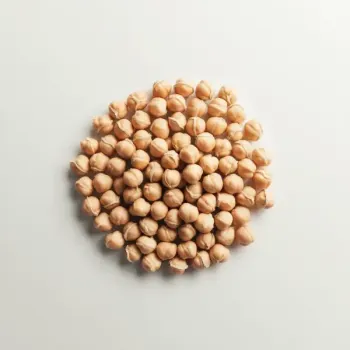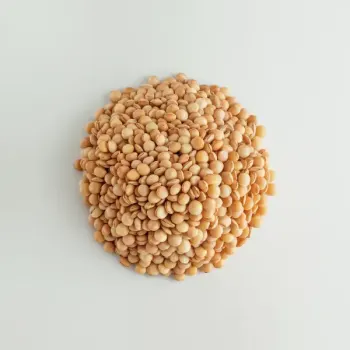Chickpeas and lentils are nutritious legumes with different textures and flavors, commonly used in a variety of dishes like soups, salads, and spreads. Chickpeas offer a nutty taste and firm texture, while lentils are earthy and cook quickly, ideal for creamy dishes.

Chickpeas, also known as garbanzo beans, are round, beige legumes renowned for their nutty taste and grainy texture. They form the base of many Middle Eastern and Indian dishes, such as hummus and chana masala.

Lentils are tiny, lens-shaped legumes that come in various colors, including brown, green, and red. They have an earthy flavor and cook quickly, making them a popular choice for soups, stews, and salads.
Chickpeas and lentils differ in taste, texture, cooking time, and nutritional profile. Chickpeas have a firmer texture and nuttier flavor, while lentils are softer with a more subtle, earthy taste. Lentils cook faster than chickpeas and can vary in texture based on the type, from firm to mushy.

Your ultimate Recipe Box, Meal Planner, and Cooking Class all in one
In soups and stews, chickpeas add a hearty texture and can maintain their shape under prolonged cooking. They are excellent in recipes like Moroccan harira or Spanish chickpea and spinach stew. Lentils are ideal for creating a thick and creamy consistency in dishes like Indian dal or French lentil soup. They break down more during cooking, thickening the liquid they are in.
Chickpeas are a superb addition to salads, providing a satisfying bite. They pair well with Mediterranean flavors in a Greek chickpea salad or as a protein boost in a simple garden salad. Lentils, especially firmer varieties like green or black lentils, are great in salads. They absorb dressings well and can be mixed with vegetables for a nutritious lentil salad or served alongside greens.
Chickpeas are the star ingredient in hummus, where their texture creates a smooth and spreadable dip. They can also be blended into various other spreads and are often flavored with tahini, lemon, and garlic. Lentils can be used to make hearty dips, such as a lentil pâté or spread. They offer a different flavor profile and can be spiced up with herbs and aromatic spices to make a unique and tasty accompaniment to bread and crackers.
Chickpeas and lentils are both high in protein and fiber, making them excellent choices for plant-based diets.
| Nutrient | Lentils ( per 100g ) | Chickpeas ( per 100g ) |
|---|---|---|
| Fat | 0.4g | 2.6g |
| Iron | 3.3mg | 2.9mg |
| Fiber | 7.9g | 7.6g |
| Protein | 9.0g | 8.9g |
| Calories | 116 | 164 |
| Carbohydrates | 20.1g | 27.4g |
Chickpeas and lentils have different textures and cooking times, so they are not always interchangeable. You can substitute them based on the desired dish's texture.
Both are healthy options, rich in protein and fiber. Lentils have a slight edge in iron content, while chickpeas have more calories and fat.
Chickpeas generally require soaking to reduce cooking time and improve digestibility, whereas most lentils do not need to be soaked and cook more quickly.
No, both chickpeas and lentils should be cooked before consumption to eliminate potentially harmful toxins and improve digestibility.
Firm lentils, such as green or black lentils, are better substitutes for chickpeas due to their ability to retain shape and texture after cooking.